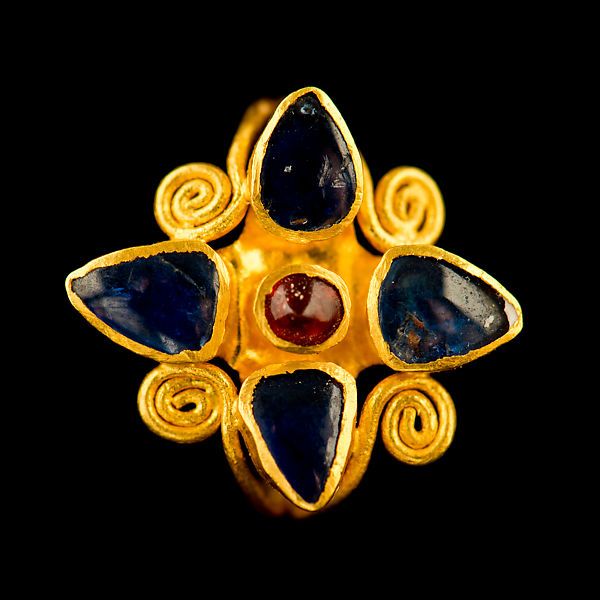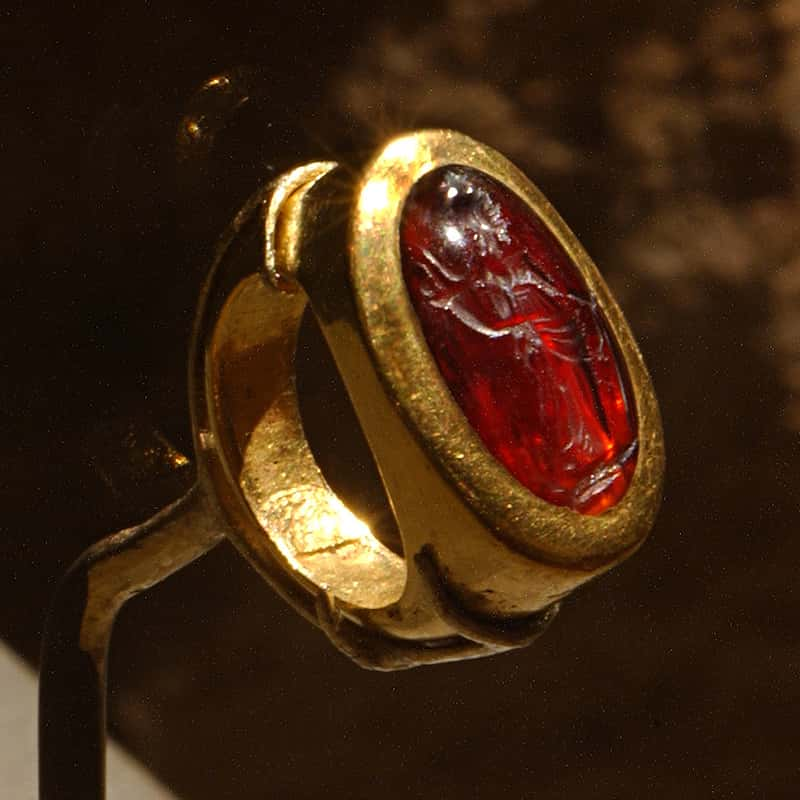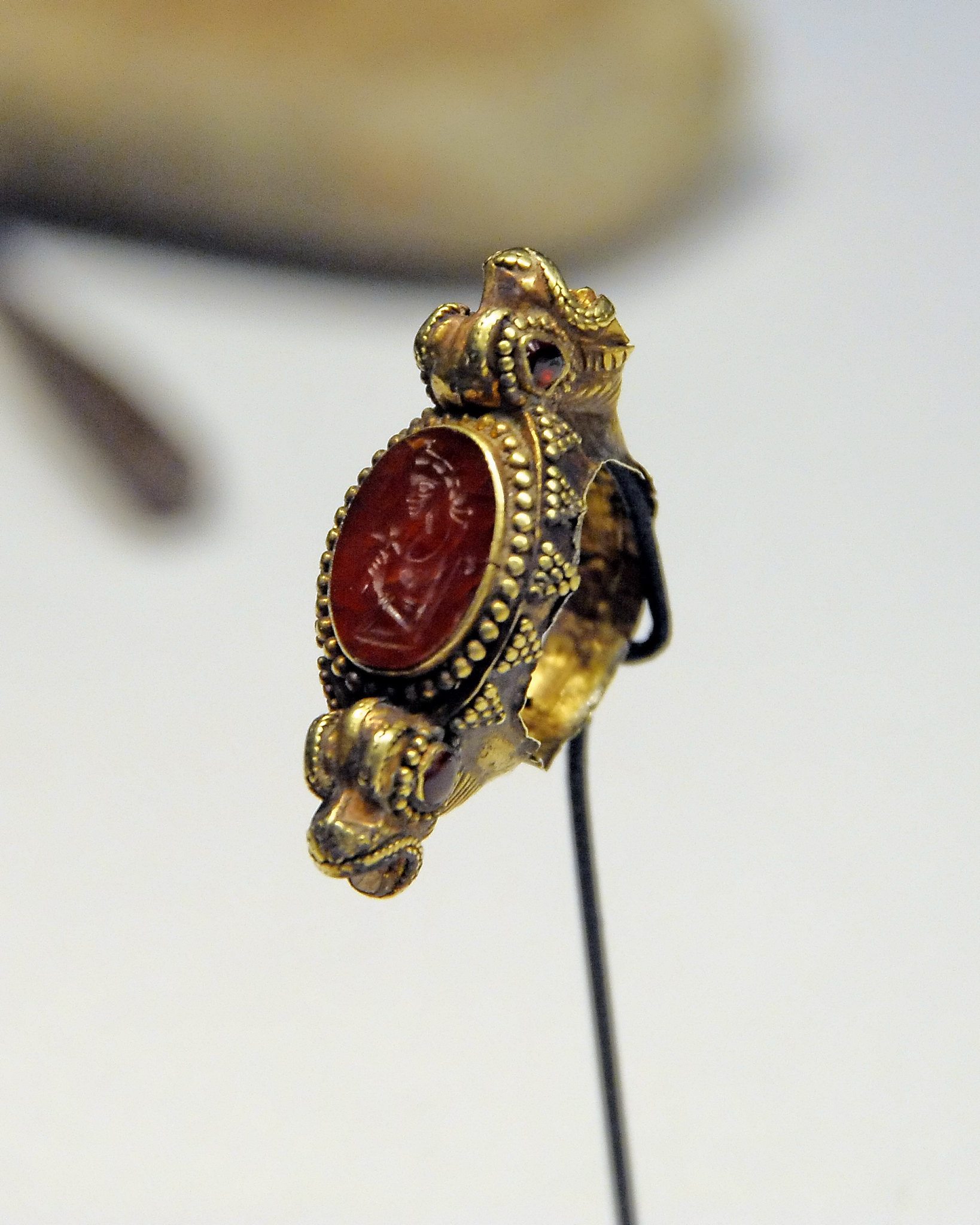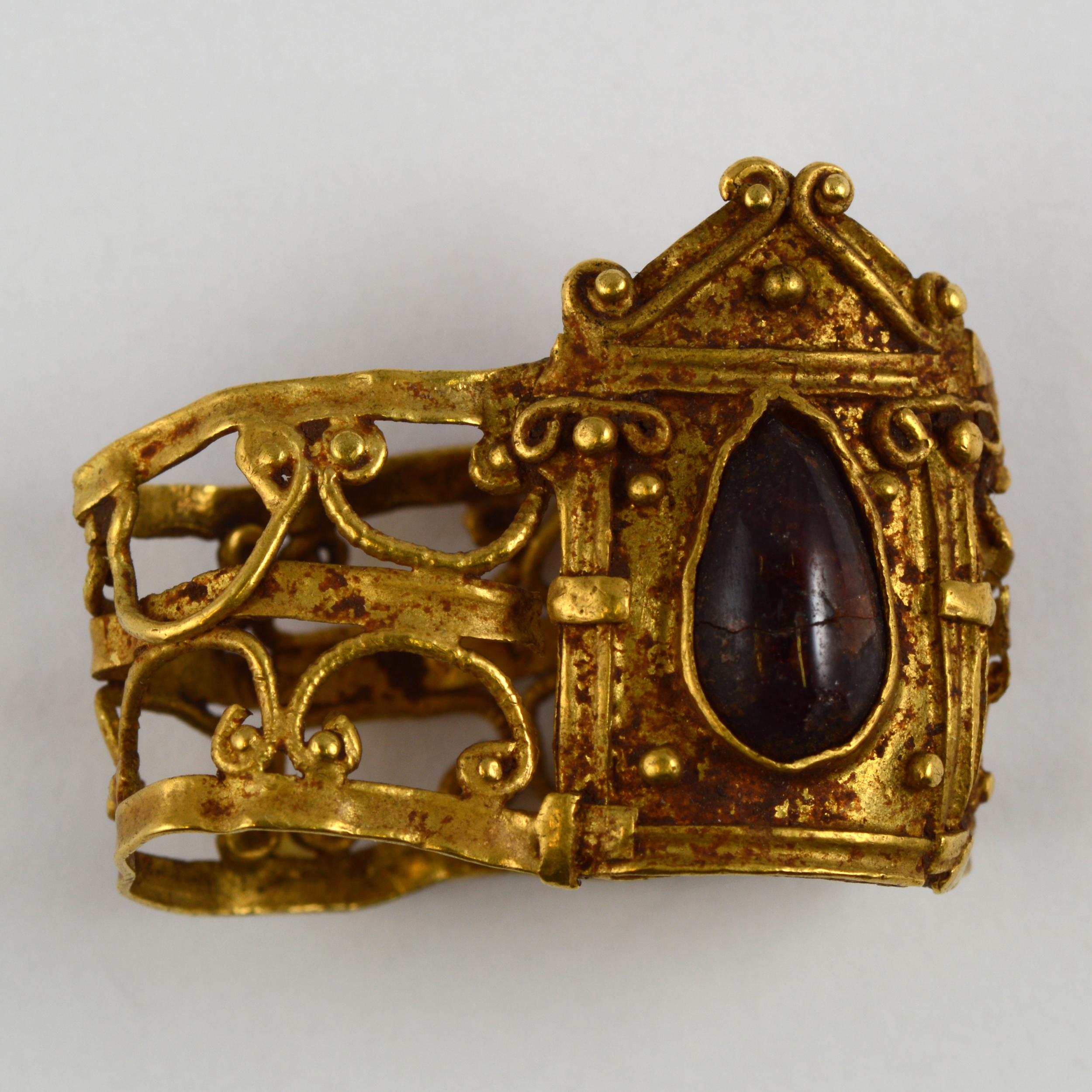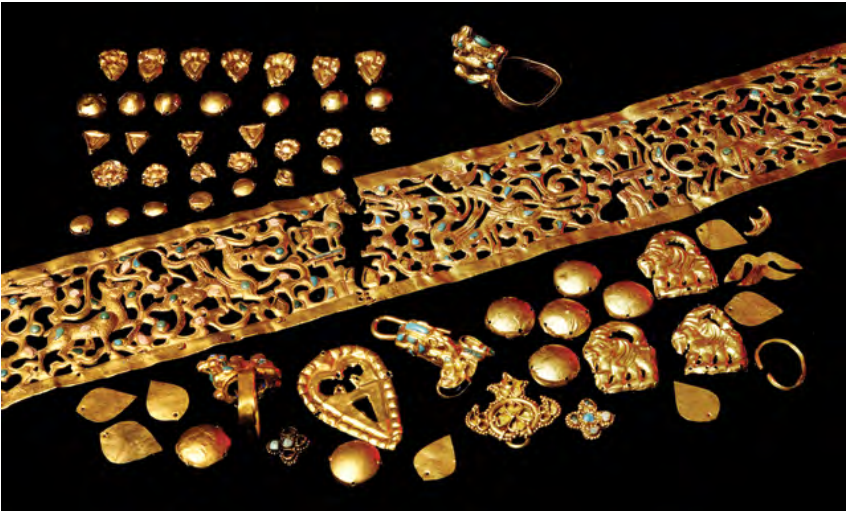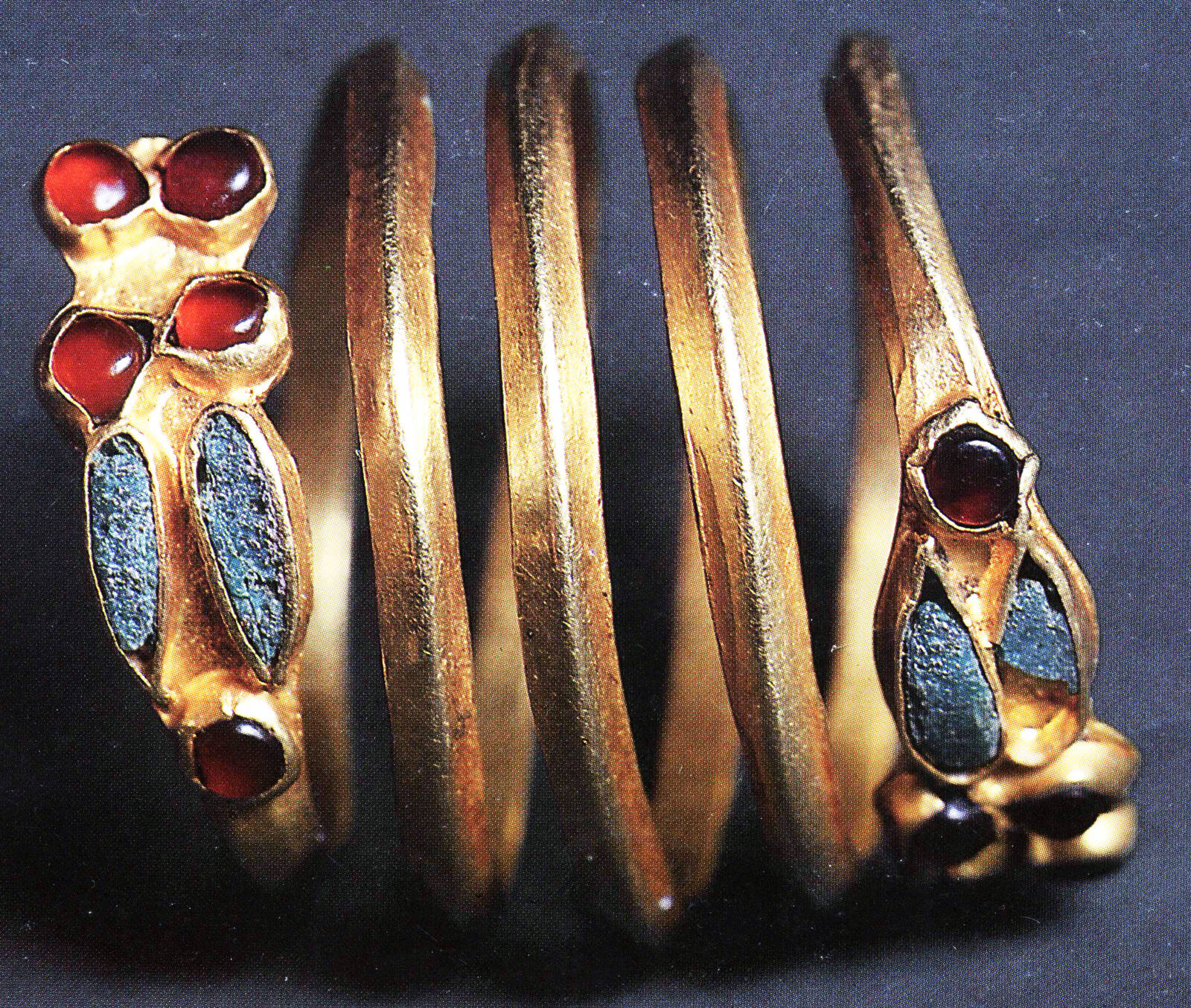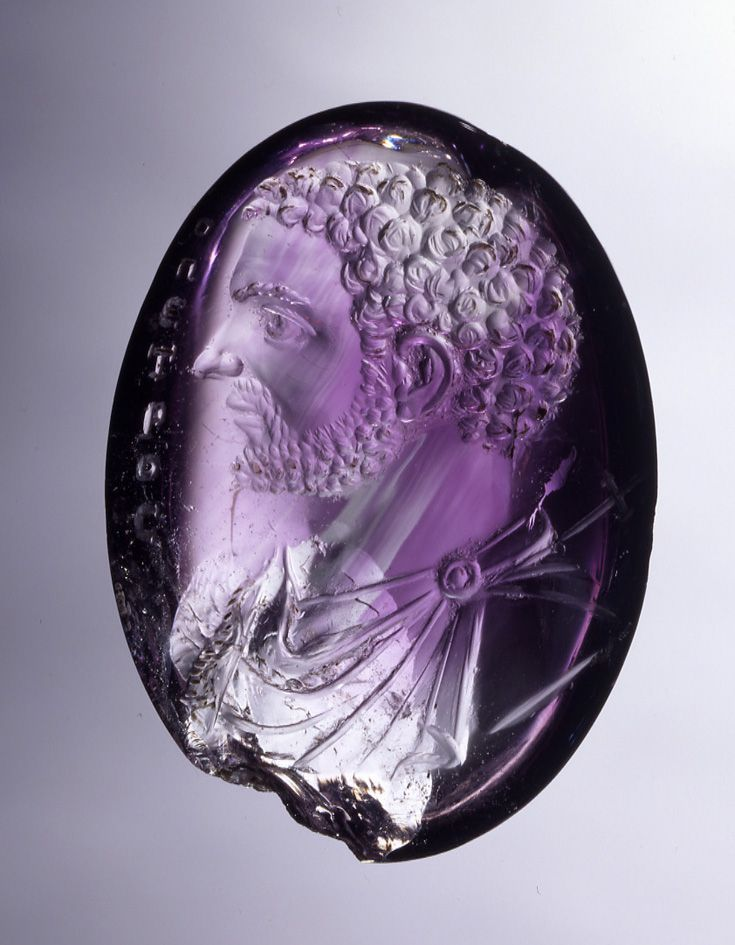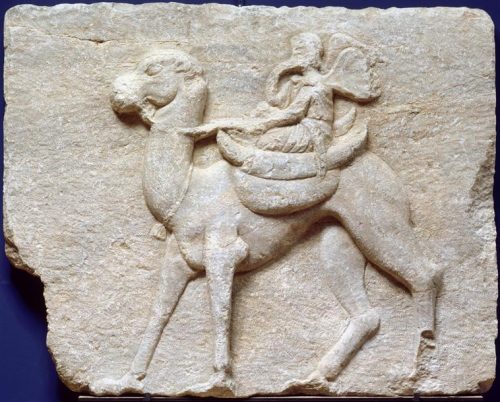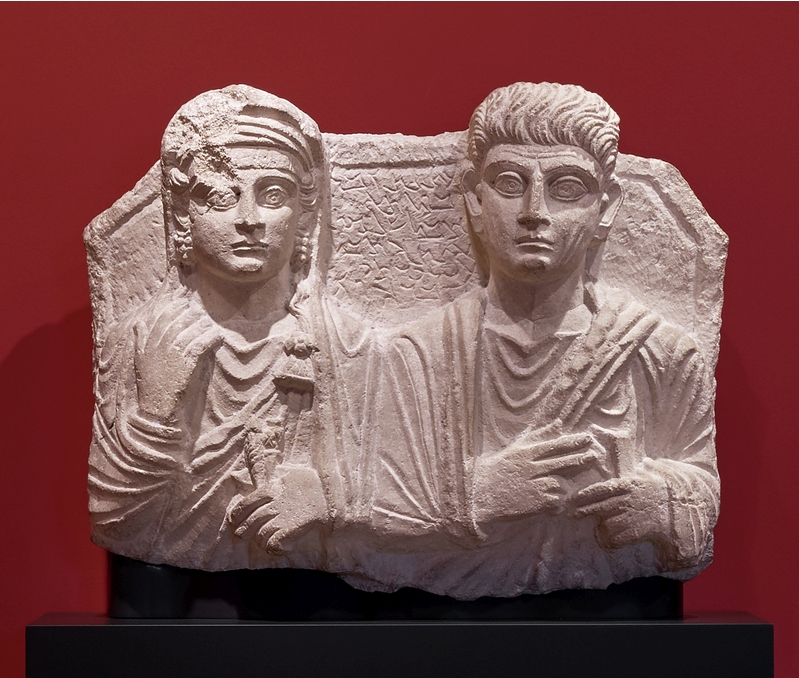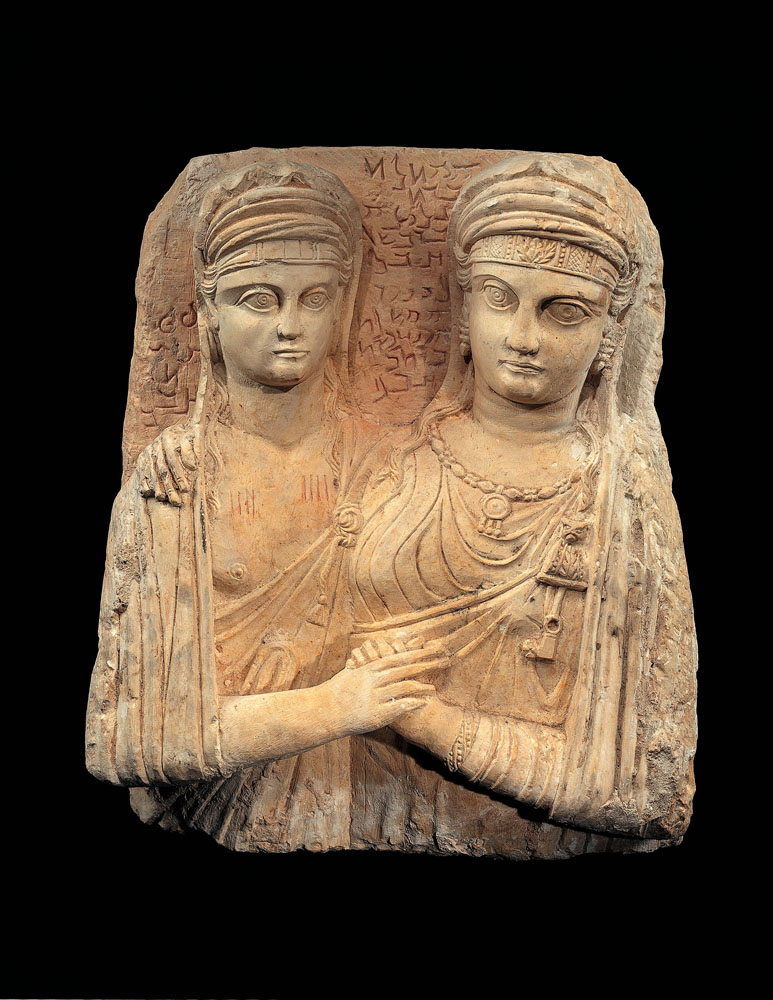“The Lengerich hoard is the largest known treasure of precious metals from Northwest Germany from the Roman Empire. Almost all of its components were melted down in the 19th century, including a valuable necklace. The treasury contained, among other things, the insignia of an officer in the Roman army: a pure gold onion-button brooch and two gold bracelets, such as those awarded by the army for special merits. The symbolic objects were buried around the year 360 CE together with gold jewelry and several gold coins. A coin, three finger rings, a spiral and four decorative buttons of unknown function still exist. Close by, more than 1,200 Roman silver coins and two bowls made of silver and bronze were also deposited. Of these, 18 coins are still preserved. Perhaps the Emsland was the homeland of the treasure owner, to which he had returned after a successful and fruitful military career in the Roman army.”
Among the finds were two gold finger rings with a raised central disc, each adorned with an engraved star: seven- and eight-pointed.

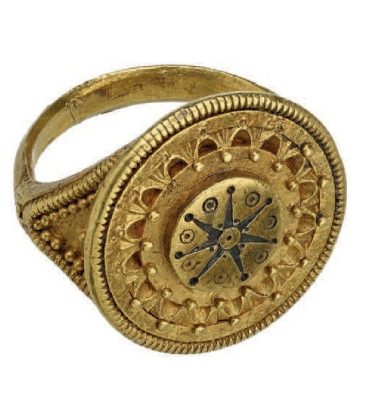
Photo after Alexandra W. Busch
- RGZM Jahresbericht 2015 https://www.academia.edu/24199666/RGZM_Jahresbericht_2015,
Sammlungen und Informationsinfrastrukturen, Dr. Alexandra W. Busch, p. 168 - Treasure find from Lengerich https://kulturerbe.niedersachsen.de
- https://de.wikipedia.org/wiki/Schatzfund_von_Lengerich
- https://www.heimatarchiv.de/lengerich/goldfund.html

